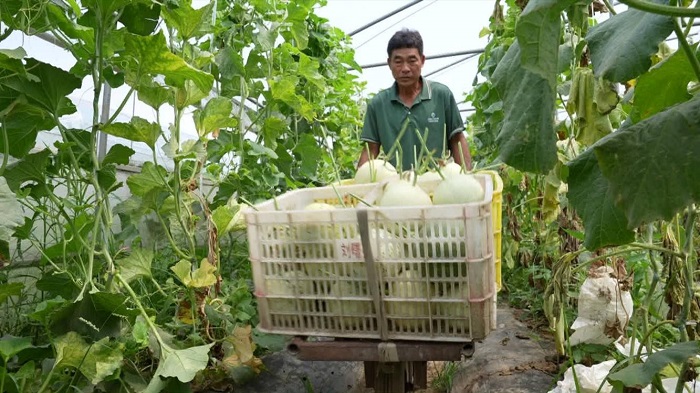Heze city district's Hami melons help grow sweet economy
The cyclical planting of Hami melons in the Dingtao district of Heze city – located in East China's Shandong province – is widely said to have helped local farmers to improve their incomes, amid the nation's efforts to promote its rural vitalization.

A farmhand gets busy bringing in Hami melons in Dingtao district. [Photo by Li Li for chinadaily.com.cn]
"We have four popular varieties of Hami melons in our farm. The varieties we selected this year are high-end domestic and imported varieties," said Lai Xintian, a manager at Huafei Farm, in Nanwangdian township in Dingtao district.
He said these melons had a thin skin, thick flesh and a high sweet taste.
"We use biologically organic fertilizers throughout the entire planting process, which meets organic standards and is well received by consumers," Lai added.
"The wholesale price is now around 20 yuan ($2.79) per kilogram. The price doubles on the retail market and the demand exceeds supply."
Lai, who has more than 10 years of experience in growing Hami melons, has built up a special set of planting techniques. Unlike ordinary melon greenhouses, the farm adopts a cyclical planting mode, with staggered planting in each greenhouse. Hami melons have evolved from single-season planting to three-season harvesting.
Most of the harvested Hami melons are supplied to high-end markets such as Beijing and Xiamen city in East China's Fujian province, with an average yield of over 13,000 yuan per mu (867 yuan per hectare), Lai said.
In recent years, Dingtao has actively adjusted its agricultural industry structure in response to market demand, with the goal of increasing agricultural efficiency and the income of farmers. (Edited by Jin Yongxue)








